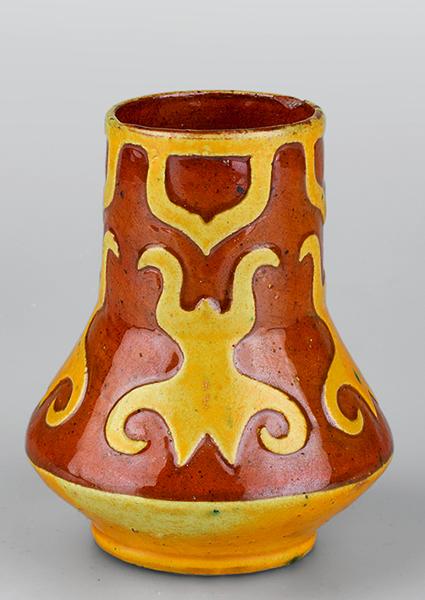
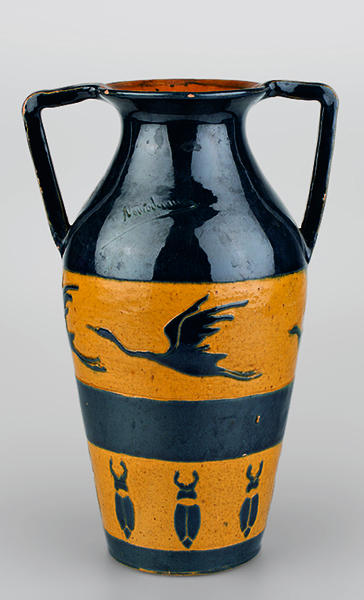
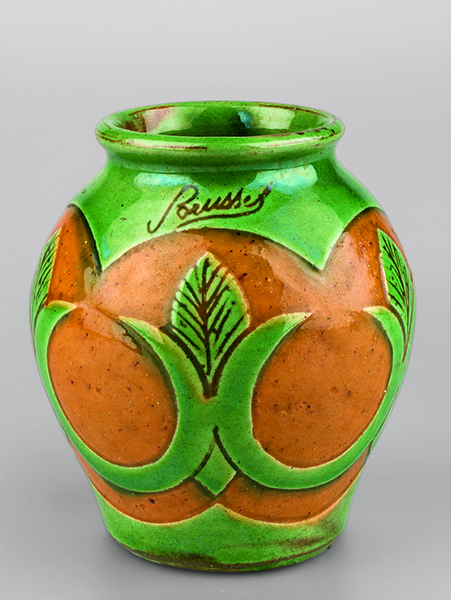

Andreas Heege, 2020
From a technical point of view, this type of decoration is part of a group of techniques where material is removed from the surface of the object, and in a wider sense is a type of incised or sgraffito decoration, known from Italian Renaissance pottery since the 16th century (“ceramica ingobbiata e graffita a fondo ribassato”). The same technique, however, was used long before that and in other cultural spheres (e.g. in the region of Iran/Persia and in Korea).
To achieve this effect, the leather-hard pottery was covered in a coat of white, green, blue or red slip, either by pouring or dipping, or by applying it quite thinly with a brush. The motif or pattern was traced onto the surface and the background in and around it scratched off to reveal the body below. Additional shapes or patterns were then incised into the motif. The vessel was then coated with a lead glaze, resulting in the background having a different colour from the pattern, depending on the colour of the clay when fired.
There is no official term for the technique, but when describing the wares, one’s gaze is automatically drawn to the areas that have been scraped off, i.e. to the background. The term “cameo-type sgraffito decoration” therefore seems appropriate. In French, the technique is known as “décor gravé en champlevé”, “décor champlevé” or “motif champlevé” (Blondel 2001, 201), a term borrowed from enamelling and applied rather loosely in the context of pottery production. In pottery production, as in lapidary (Cameo), the motif is seen and described as a raised area. By contrast to champlevé, however, the technique described here does not involve filling up the recessed areas with a different colour, but rather leaves them unglazed.
In Switzerland, the technique does not appear to have been known until shortly before the First World War. From 1913, however, it was included as a novelty technique in the range of the “Poterie commune de Nyon S.A.”, at a time when it was being managed by the Italian-French couple, Henriette Morello and Théophile Thomas Morello.
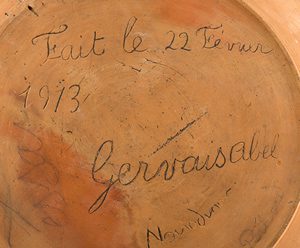
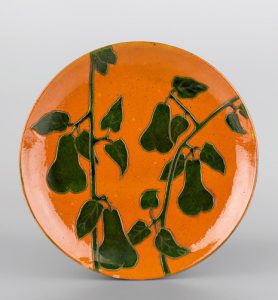
Henriette’s brothers also worked at the small factory, as did a potter named Abel Gervais, who created the oldest known dish bearing the decoration which is dated 1913.
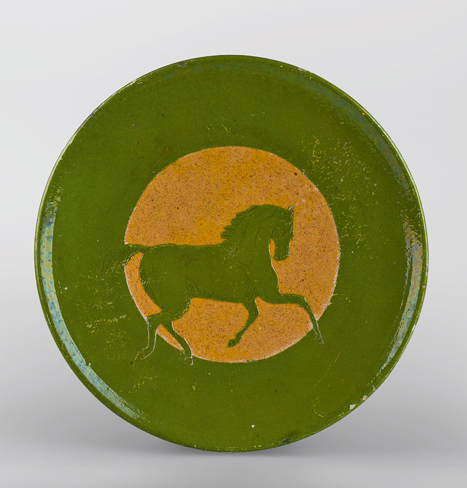
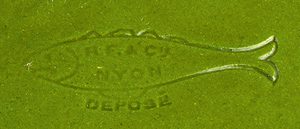
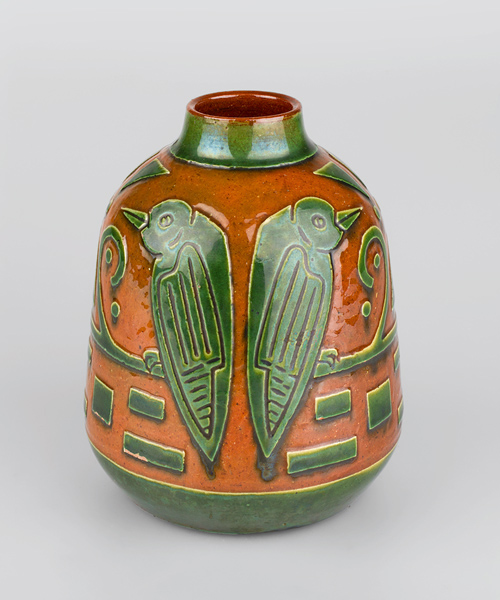
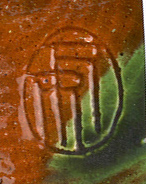

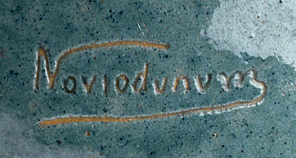
In 1916, the factory was taken over by the Richard brothers from Nyon, who continued using the technique until they went out of business in 1921.


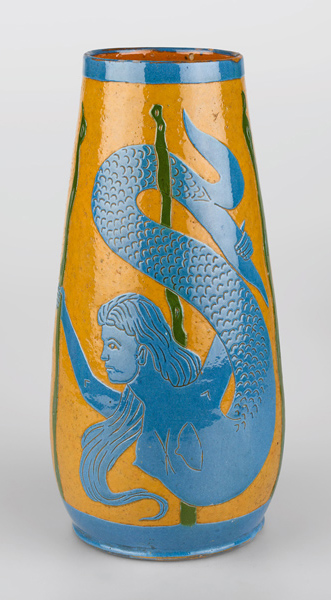
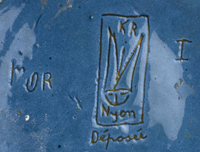
Between 1917 and 1923, the Ceramic studio of Hermann Kaeppeli in Nyon also used the visually pleasing technique.
Translation Sandy Haemmerle
German: Sgraffitodekor mit vertieftem Hintergrund
French: Décor gravé en champlevé
Italian: ceramica ingobbiata e graffita a fondo ribassato
References:
Blondel 2001
Nicole Blondel, Céramique: vocabulaire technique, Paris 2001, 201.

